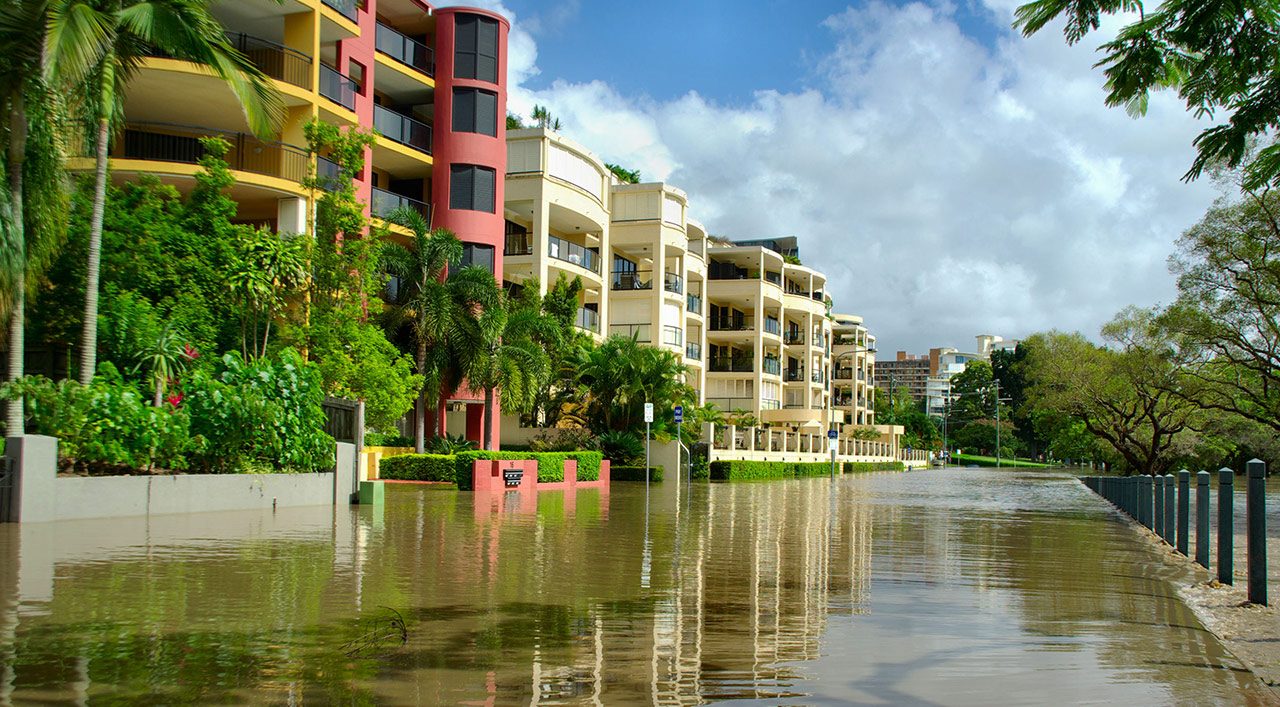This article is from the Australian Property Journal archive
AUSTRALIANS will be living in a more volatile climate amid more frequent and severe weather conditions due to climate change, creating havoc for insurers and households.
CSIRO’s new Our Future World report – an update on the previous release a decade ago – identifies adapting to climate risk as one of seven “megatrends” likely to impact Australian organisations over the next 20 years, according to the CSIRO.
“Australia is at a pivotal point. There is a tidal wave of disruption on the way, and it’s critical we take steps now to get ahead of it,” CSIRO CEO Dr Larry Marshall said.
“More frequent and severe weather conditions are reducing the profitability of northern Australia for insurers and more households are choosing to forego insurance,” the report said. That figure now represents 20% of all households, versus 11% across Australia in 2016.
A 2020 review by the Australian Competition and Consumer Commission found that northern Australian households pay 1.8 times more in home and contents insurance premiums than the rest of the country, and similar premium discrepancies exist for strata insurance also.
Risks of extreme weather and climate change will leave one in 25 homes in Australia uninsurable by 2030, according to analysis from the Climate Council. Properties uninsurable by 2030 will be largely found in Queensland by a significant margin, at 6.5% or properties, almost double the next closest state of territory.
The Insurance Council of Australia estimates the insurance bill for February’s floods in Queensland and New South Wales to be $4.8 billion from about 225,000 claims.
It also says at least $30 billion will need to be invested to protect coastal properties from sea level rises, and some communities will need to retreat altogether to less hazardous regions.
In some parts of the world, such as in cities in Pakistan and the United Arab Emirates, temperatures are already exceeding the human body’s threshold for survivability in humid heat conditions. Heat-related deaths are predicted to grow by 60.5% or more across major Australian capital cities between 2020 and 2050, which the CSIRO believes to be a conservative estimate. Recent research has suggested that official records of deaths attributed to excessive heat in Australia are underestimated by at least 50-fold.
CSIRO and the Bureau of Meteorology predict that Australia is likely to experience more heat extremes and fewer cold extremes, longer and more severe droughts and fire seasons, continued sea level rises and ocean warming and acidification, prolonged marine heatwaves, and fewer, but more intense, cyclones.
Natural disasters are expected to cost the Australian economy almost three times more over the next 30 years, from $13.2 billion in 2017 to $39.3 billion by 2050.
Infrastructure, such as road pavements or railways, is under threat as it was built using materials and methods designed for stable climatic conditions. Extreme high temperatures can increase the risk that road pavements will rut or railways will expand and buckle, while stronger winds increase the frequency and intensity of turbulence of airline flights, high air temperatures will impair aircraft take-off performance and rising sea levels pose a risk for airports built near sea level.
“Pre-emptively adapting existing and forthcoming infrastructure for a changing climate will be critical in reducing future infrastructure risks and costs,” the report said.




